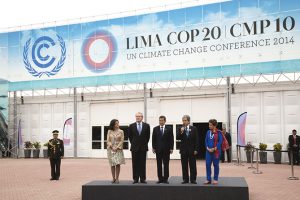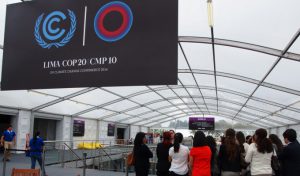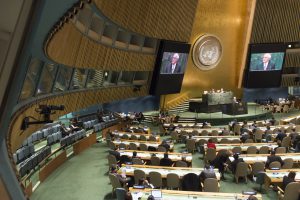Since the United States and China issued their Joint Announcement on Climate Change on the fringes of the Beijing APEC forum, the spotlight has been on the impact the two nations’ respective commitments could have on the global climate negotiations – and, ultimately, the prospects for preventing dangerous climate change.
The US committed to reducing its greenhouse gas emissions by 26 to 28% by 2025, from a 2005 baseline, while China stated its intention to peak its emissions around 2030, with the non-fossil fuel share of energy consumption increased to around 20% by 2030. China has not set an absolute level for its emissions cap, although there is evidently a constituency for including such a target in the next five-year plan.
Less attention has been given to the new initiatives of Sino-US cooperation announced in the statement. These measures include expanding the work of the US-China Clean Energy Research Center; a new carbon storage project in China jointly led by US and Chinese partners; “enhanced” bilateral cooperation on reducing the use of HFCs, which UNEP has warned could significantly contribute to climate change; a climate forum for cities; and a US trade mission to China focused on low-carbon.
If carried out, these initiatives would add to a variety of existing joint-projects on climate change between the US, China and other major emitters like the EU. Much of this cooperation, taking place at the national, provincial and city levels and in the private sector, falls outside the scope of the global climate regime centered on the UN Framework Convention on Climate Change (UNFCCC). Nevertheless, bilateral cooperation can help to bring more ambitious globally-coordinated action within reach.
Pledge and review
As diplomats gather in Lima for the latest climate summit, the deal they are working to conclude by December 2015 is very different to previous conceptions of a top-down, centralised agreement akin to the Kyoto Protocol. Such an agreement proved out of reach at Copenhagen in 2009. Negotiators have since worked on a “pledge-and-review” model, with nations submitting their own commitments for international verification. At the same time, negotiations continue over an array of institutions and funds to assist developing countries with finance and technology for climate mitigation and adaptation.
In this context, bilateral cooperation offers a way of working with, rather than against, the currents of climate diplomacy. At the multilateral level, China continues to stick to the UN climate convention principle of “common but differentiated responsibilities”, which imposes higher obligations on developed countries than developing ones (current attempts to finesse this sticking point are discussed here). President Xi Jinping has set the goal of China becoming a developed country by 2049. On this basis, China could insist on lower UNFCCC commitments than the US far into the future.
The tension between China’s growing role as a clean technology and finance provider – including in partnerships with the United States and other countries – and its championing of CBDR is most keenly felt in the UN climate talks. For example, during the October UNFCCC session, China’s negotiator stated that “South-South cooperation” (in which China is a major player) should not be included in the UN climate deal.
However, at the bilateral level, there are indications that China sees climate change as an opportunity for greater cooperation with the US. The National Center for Climate Change Strategy and International Cooperation (NCSC), within China’s powerful National Development and Reform Commission, has welcomed the joint announcement as a “broadening of the arena and outlook for tangible cooperation”. The NCSC assessment foreshadows further cooperation. For example, it raises the idea of China using climate cooperation to reduce trade "imbalances" between the two countries, by using its foreign exchange reserves to invest in US clean energy and infrastructure.
Speaking at November’s Australia-China Youth Dialogue, Li Junfeng, the NCSC’s director-general, emphasised that unlike other areas of contention in which the US and China are at odds, climate is a field in which both sides can work together for mutual benefit. This calculation of interest can serve as the basis for more joint-initiatives between the US and China that can help to build respective capacities for more ambitious action.
Scaling up
After years of preparatory work, 2015 looms as a year of goal-setting for global environmental policy. The July International Conference on Financing for Development in Addis Ababa is tasked with setting a financing framework for the UN’s post-2015 development agenda. This will be followed by the September UN meeting at New York, where nations will sign off on the Sustainable Development Goals, which will be due to replace the expiring Millennium Development Goals. Finally, the December Paris summit is the deadline for the global climate deal due to take effect in 2020.
The outcomes of these summits are unlikely to put the world on a sustainable pathway, even if fully implemented. This means governments and other stakeholders that want to see further progress will need to create the conditions for more ambitious iterations (the United States supports a five-year cycle of national commitments under the Paris deal, while other parties favour 10 years). A disparate latticework of bilateral and private sector projects, driven by various diplomatic and commercial interests, is no substitute for a robust international agreement. Nevertheless, by helping to build out the "new climate economy" on the ground, such projects can help to make the slow grind of multilateral diplomacy that much easier.







